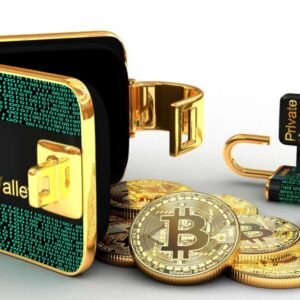Introduction
The cryptocurrency world has long been marked by intense scrutiny and legal ambiguity, especially in the United States. One of the most pivotal legal battles that has captured the attention of investors, developers, and regulators alike is the case between Ripple Labs and the U.S. Securities and Exchange Commission (SEC).
Since the lawsuit began in December 2020, it has served as a bellwether for the regulatory stance on digital assets. Now, after years of legal wrangling, The Ripple and SEC Settlement has introduced a new chapter in this high-profile saga.
This joint motion and potential resolution is more than just a legal outcome—it’s a landmark event that could influence how cryptocurrencies are treated under securities laws in the U.S. and beyond. In this comprehensive analysis, we’ll break down the key components of the joint motion, examine its implications for Ripple, XRP, and the broader crypto industry, and discuss what this might mean for the future of digital asset regulation.

1. Background of the Ripple vs. SEC Case
Before delving into the specifics of The Ripple and SEC Settlement, it’s important to understand how this legal dispute began and why it’s so significant. In December 2020, the SEC filed a lawsuit against Ripple Labs Inc., alleging that the company had conducted an unregistered securities offering by selling XRP tokens to raise capital. The SEC’s complaint named Ripple’s top executives, Brad Garlinghouse and Chris Larsen, as co-defendants, asserting that they knowingly violated securities laws.
Ripple, on the other hand, vehemently denied the allegations, arguing that XRP is a digital currency, not a security. The company emphasized that XRP functions as a bridge currency for cross-border payments and has a utility that distinguishes it from traditional securities. This defense set the stage for a legal battle that would span years, with numerous twists and turns, including summary judgment motions, high-profile testimonies, and significant discovery disputes.
The lawsuit’s trajectory held major implications—not just for Ripple, but for the classification of countless other cryptocurrencies. Many feared that a sweeping ruling in favor of the SEC could stifle innovation and set a restrictive precedent. Thus, The Ripple and SEC Settlement represents a turning point, not just for the company involved, but for the entire digital asset ecosystem.
2. Unpacking the Joint Motion: What Does It Really Mean?
The joint motion filed by Ripple and the SEC has sent shockwaves through the crypto community. So, what exactly does this joint motion entail? And what does it say about the terms of The Ripple and SEC Settlement?
The motion outlines a proposed resolution that includes a partial settlement of claims, as well as a roadmap for how the remaining issues will be addressed. It reflects a desire from both parties to avoid prolonged litigation, potentially due to the escalating costs, the unpredictable nature of court rulings, and the broader regulatory implications at stake.
Key components of the joint motion include:
-
Monetary Penalties: Ripple has agreed to pay a substantial financial penalty, though it is significantly lower than what the SEC initially sought.
-
No Admission of Wrongdoing: While Ripple has consented to certain terms, the company does not admit to any violation of federal securities laws.
-
Operational Clarity: The settlement allows Ripple to continue its business operations with some compliance requirements but without registering XRP as a security.
-
Future Guidance: Both parties have committed to working collaboratively on clearer regulatory frameworks moving forward.
Perhaps the most significant aspect of The Ripple and SEC Settlement is that it avoids setting a rigid precedent for how all digital assets should be treated. Instead, it acknowledges the unique nature of XRP and opens the door for more nuanced regulatory interpretations.
3. Industry Reactions and Market Impact
The crypto market has responded with intense interest—and some relief—to the news of The Ripple and SEC Settlement. XRP prices surged in the days following the announcement of the joint motion, reflecting renewed investor confidence in the token’s legal standing and long-term viability.
Industry leaders and analysts have chimed in, with many viewing the settlement as a pragmatic step toward regulatory clarity. Prominent figures like Coinbase CEO Brian Armstrong and pro-crypto lawmakers such as Senator Cynthia Lummis have applauded the move, suggesting that it could pave the way for more constructive engagements between regulators and crypto firms.
Still, not everyone is satisfied. Critics argue that the settlement leaves too many questions unanswered. For instance:
-
Does the SEC still consider XRP a security in certain contexts?
-
Will other projects face similar lawsuits?
-
How will this affect new token launches or DeFi protocols?
Despite these lingering concerns, most agree that The Ripple and SEC Settlement marks a shift in tone—away from punitive enforcement and toward negotiated compliance. This new direction could encourage more innovation while still holding bad actors accountable.
Moreover, institutional investors who were previously wary of regulatory uncertainty may now be more inclined to enter the market. This could bring a new wave of capital and legitimacy to the crypto space, all thanks to the ripple effects (pun intended) of this groundbreaking settlement.
4. Regulatory Implications and the Road Ahead
With The Ripple and SEC Settlement largely in place, attention now turns to what comes next. What does this mean for the future of crypto regulation in the United States?
First and foremost, the settlement underscores the need for clear legislative guidance. While courts and enforcement agencies have attempted to interpret existing laws in the context of digital assets, these frameworks were not designed with blockchain technology in mind. This legal gray area has created uncertainty for innovators and made the U.S. a less attractive environment for crypto startups.
In response, lawmakers are now under pressure to develop comprehensive crypto regulations. The bipartisan interest in crypto-related legislation—ranging from the Financial Innovation and Technology Act to the Responsible Financial Innovation Act—reflects growing momentum in Congress to address these issues head-on.
Secondly, the case highlights the evolving role of the SEC. While the agency initially took a hardline stance against Ripple, the joint motion suggests a willingness to engage in more flexible, negotiated outcomes. This could lead to a new era of “regulation by engagement” rather than “regulation by enforcement.”
Finally, The Ripple and SEC Settlement will likely influence how other ongoing and future cases are handled. Projects like Ethereum, Solana, and various DeFi protocols could cite this case as precedent when defending their own token models. Legal experts expect more negotiated settlements in the future, as companies seek to avoid the reputational and financial damage of extended litigation.
In sum, this settlement is not just the end of a legal dispute—it’s the beginning of a broader dialogue on how digital assets should be governed.
Conclusion: A Turning Point for Crypto Regulation
As we’ve explored, The Ripple and SEC Settlement is more than a legal resolution—it’s a symbolic and practical milestone for the cryptocurrency industry. By settling key issues while avoiding a draconian precedent, Ripple and the SEC have opened the door for more balanced, informed, and collaborative approaches to regulation.
This case has set a powerful example for other crypto companies navigating a murky legal landscape. It has also reinforced the urgent need for legislative clarity, providing a timely call to action for policymakers and regulators.
More importantly, it has offered the crypto community a glimpse of what a more mature, compliant, and cooperative future might look like. Whether you’re an investor, developer, or casual observer, this is a moment worth watching closely.
So, what are your thoughts on The Ripple and SEC Settlement? Do you believe this sets a good precedent, or are there still too many unanswered questions? Share your thoughts in the comments below—we’d love to hear your take!






